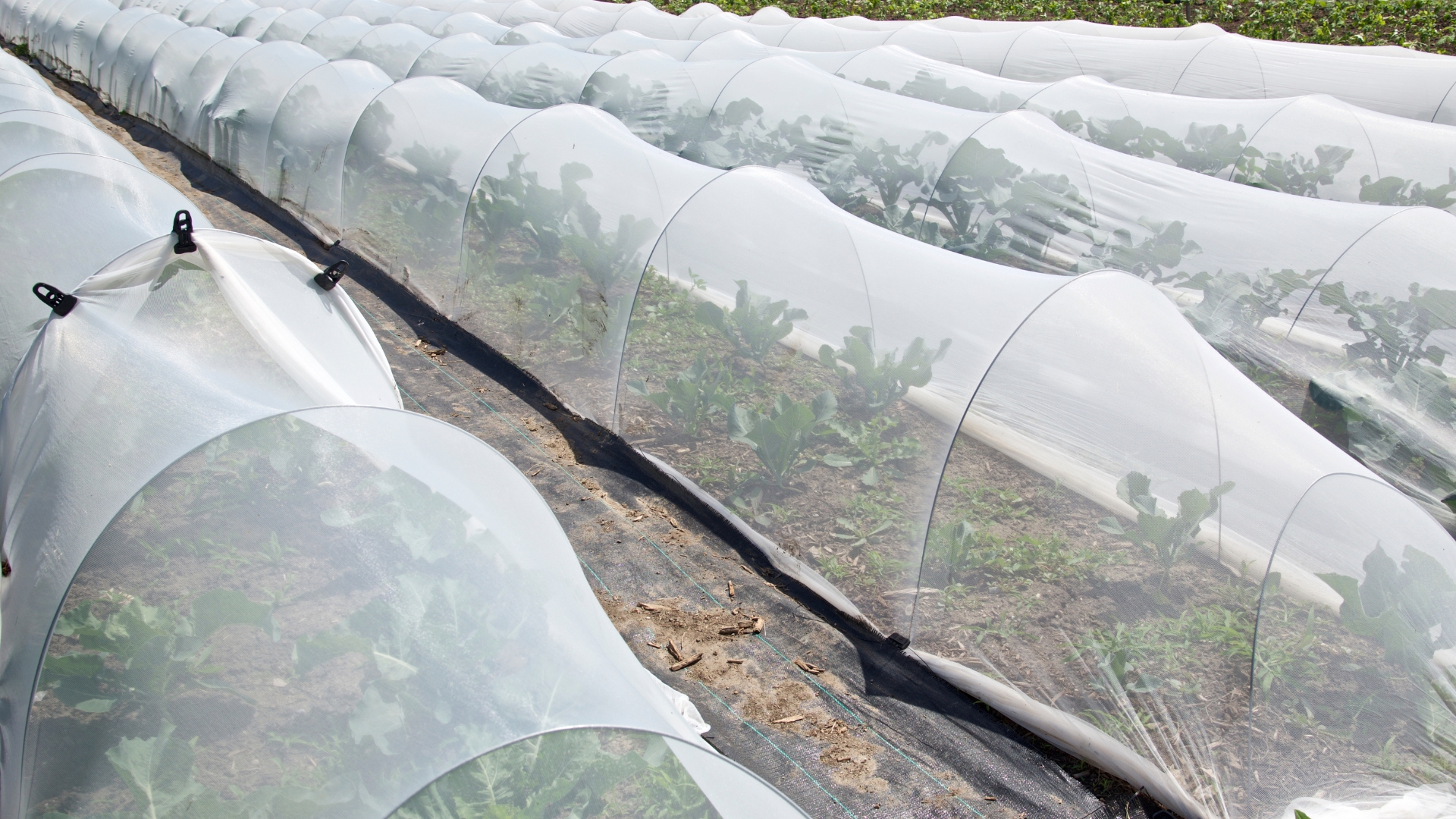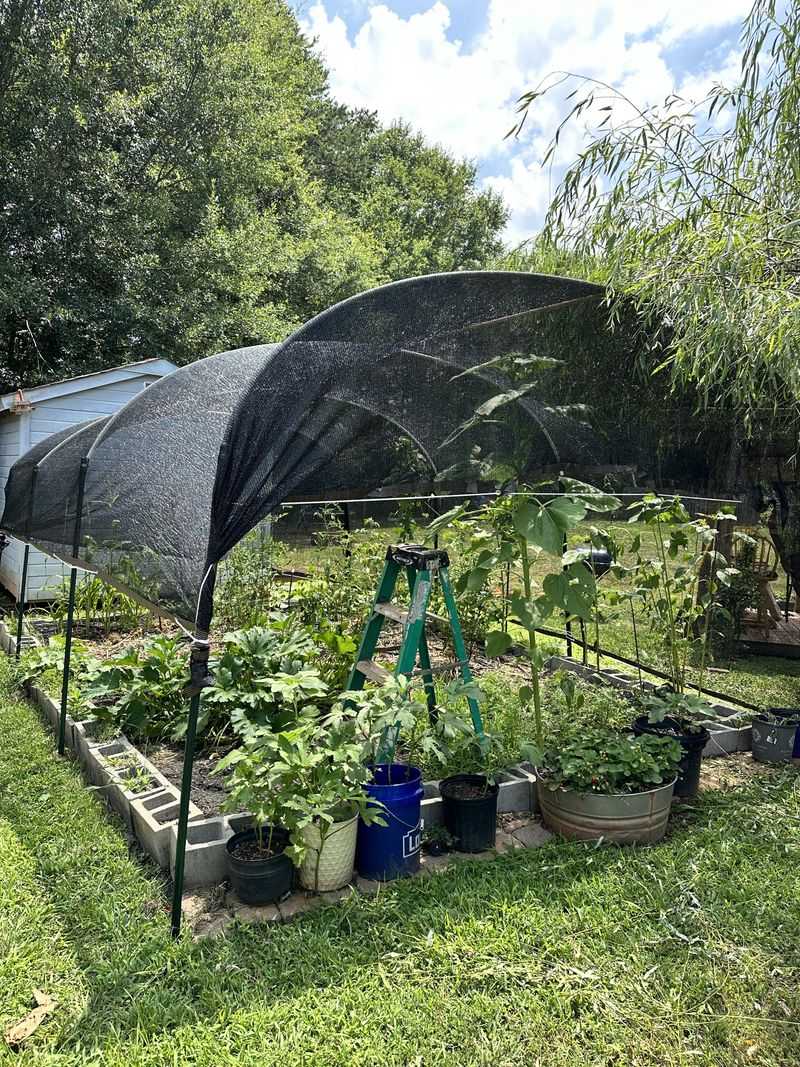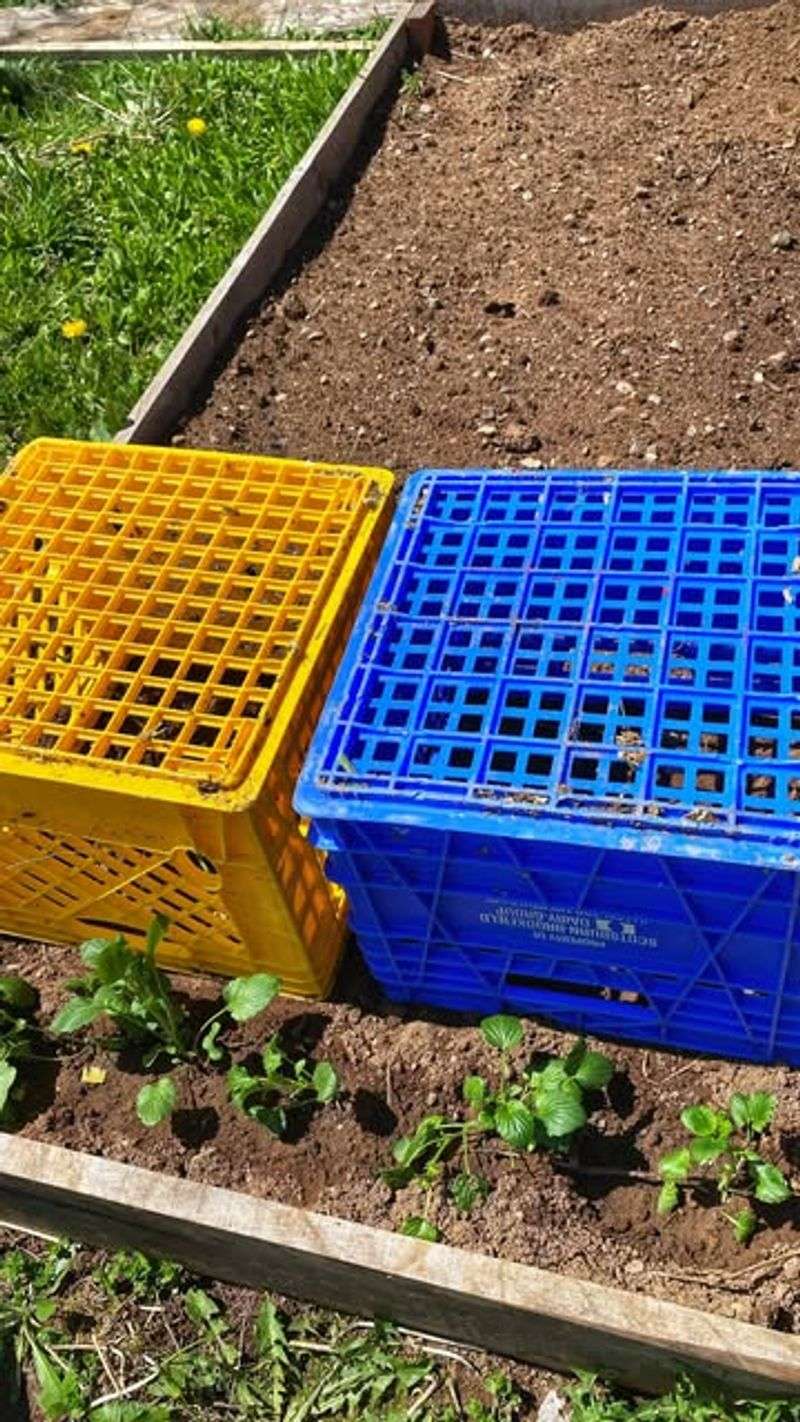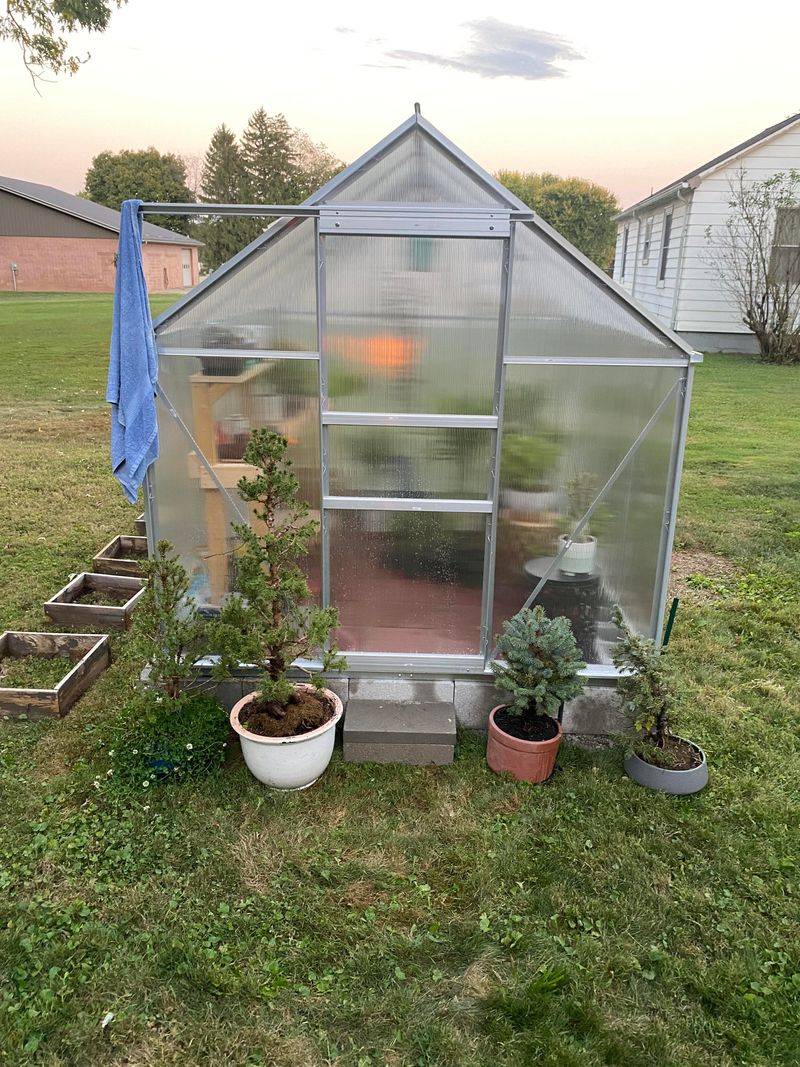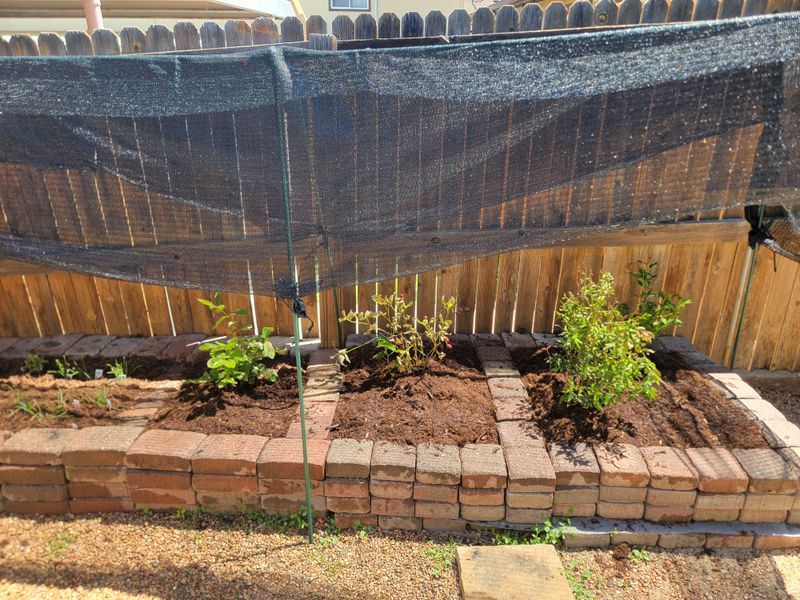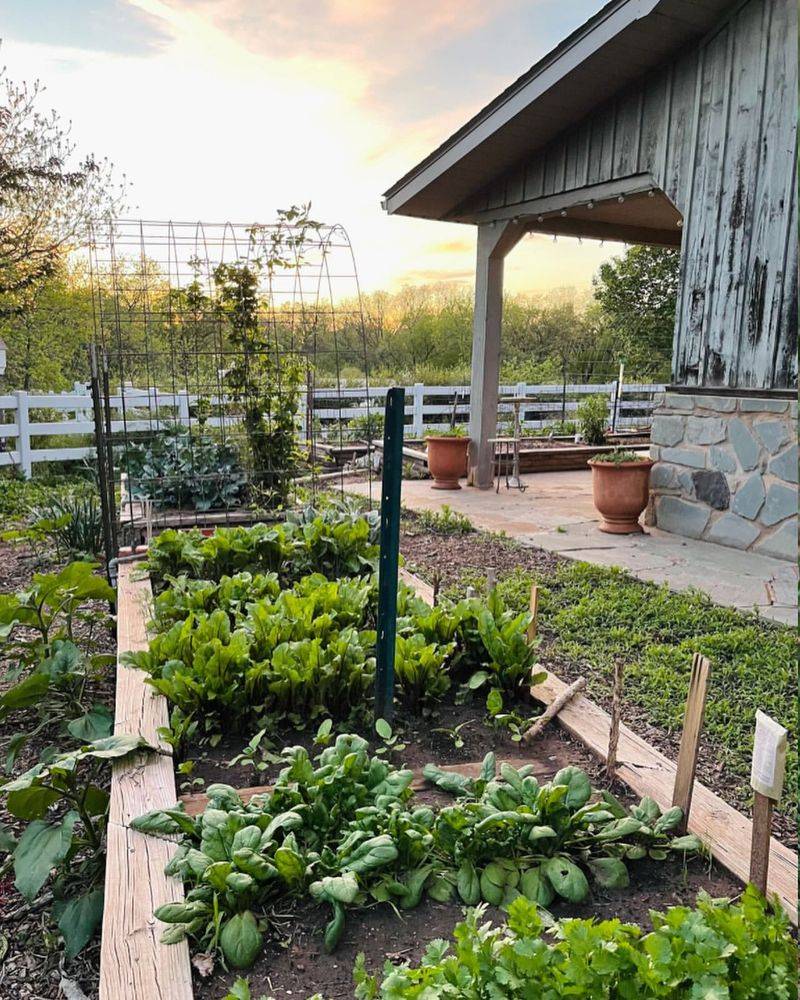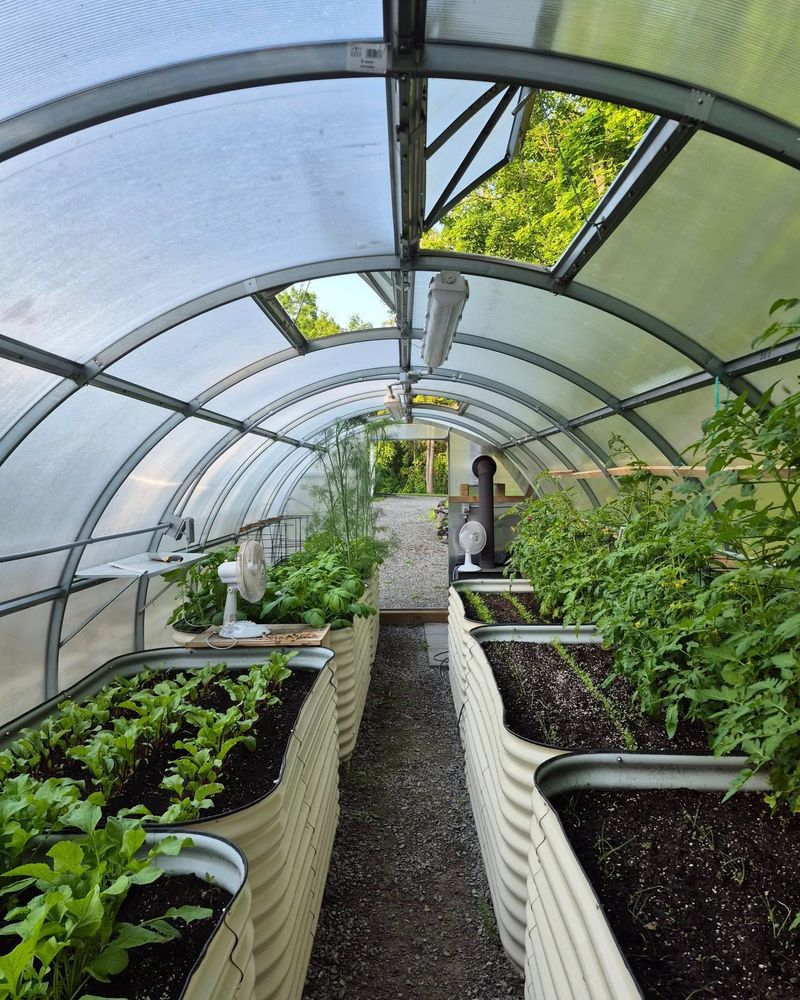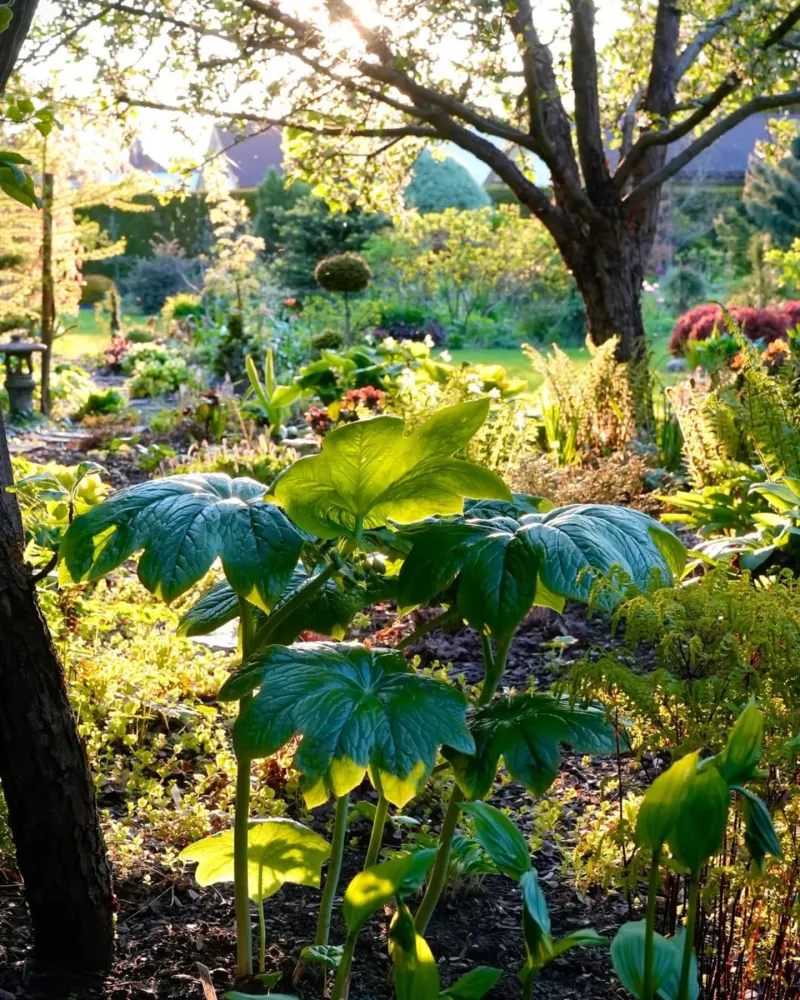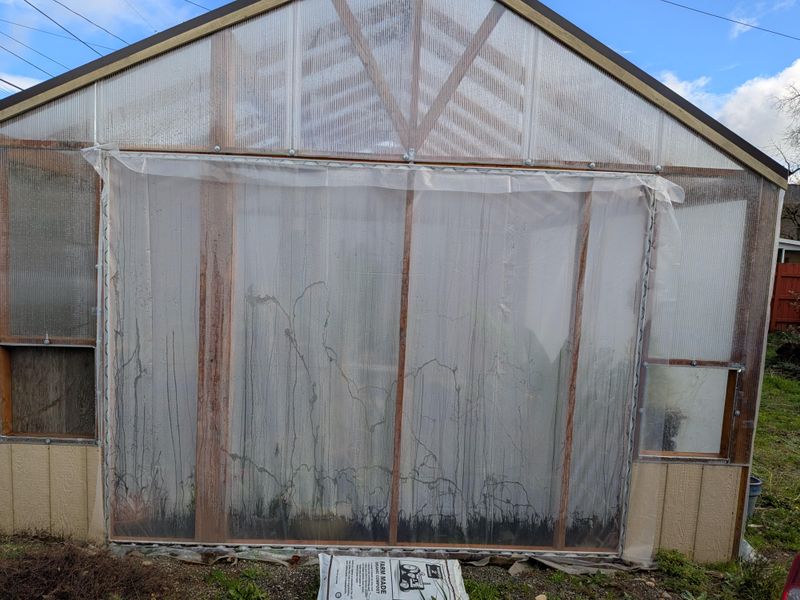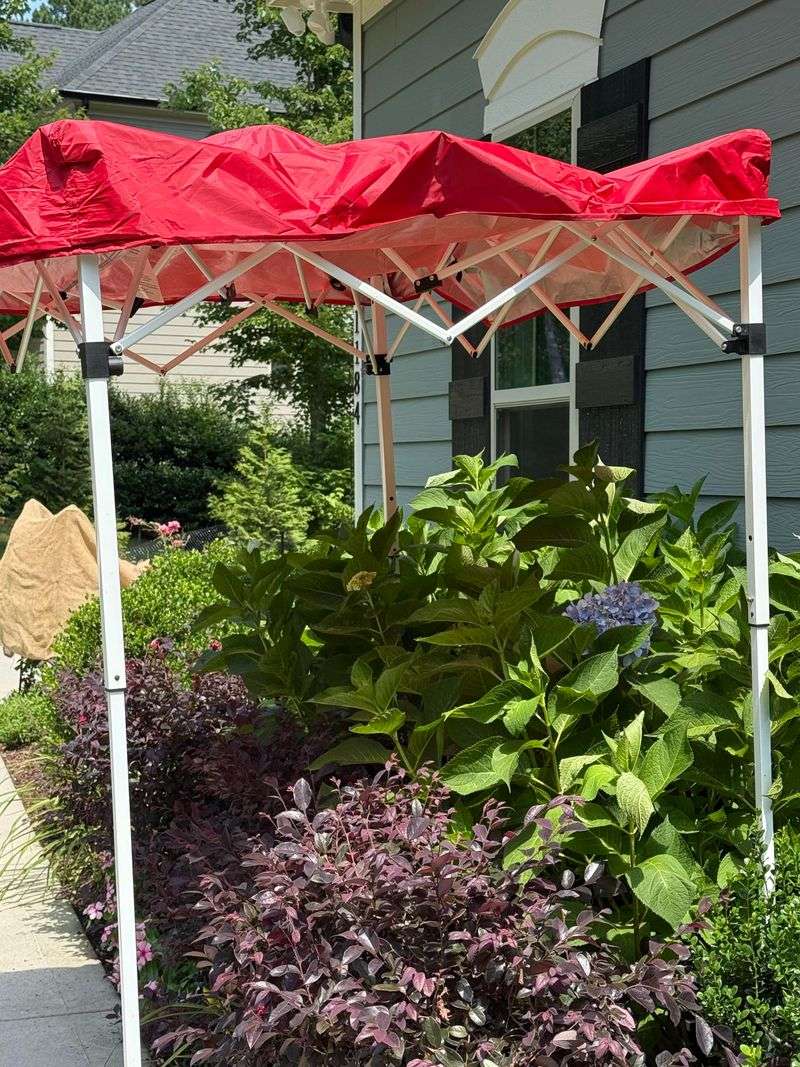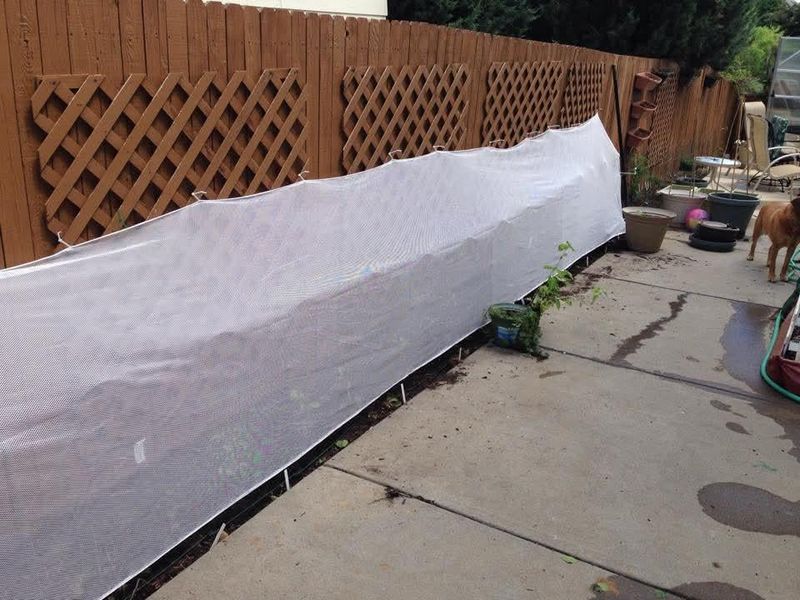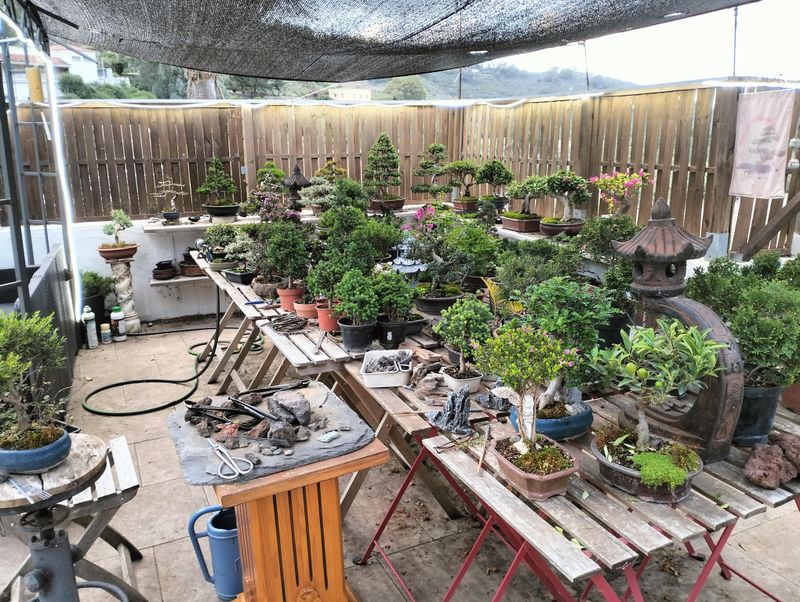I didn’t think I’d need shade cloth in Colorado—until my tomatoes started drooping in the midday sun. Turns out, local gardeners swear by it for keeping plants cool and happy during these hot stretches.
I gave it a try, and it made a huge difference in how my garden held up. It’s simple to set up and works like a charm.
If your plants are wilting, a little shade might be just what they need to power through the heat.
1. Portable Plant Umbrellas
Resourceful Colorado gardeners create mini umbrellas from shade cloth stretched over wire frames. These movable shields follow sensitive plants throughout the day as the sun shifts position.
In the high-altitude regions of Colorado, these portable sunblockers can reduce leaf temperature by up to 15 degrees during peak heat hours!
2. Vegetable Tunnels
Creating arched tunnels with PVC pipes covered in shade cloth forms perfect protection corridors. Colorado’s intense UV rays get filtered while lettuce, spinach, and other cool-season crops thrive underneath.
Many Front Range gardeners use 30-40% density cloth, finding the perfect balance between sun protection and growth for their delicate greens.
3. Seedling Hardening Stations
Transitioning tender seedlings from indoors to Colorado’s harsh environment requires gradual adjustment. Smart gardeners create hardening stations with adjustable shade cloth panels that can be removed section by section.
These adaptation zones have saved countless young plants across Colorado’s varied climate zones from shock and sunscald!
4. Greenhouse Heat Management
Colorado’s intense sunshine can turn greenhouses into ovens, even during spring and fall. Savvy gardeners install retractable shade cloth systems inside their greenhouse roofs to regulate temperature.
In places like Boulder and Fort Collins, these systems have extended the growing season by preventing temperature spikes that would otherwise stress or kill plants.
5. Patio Garden Shields
Apartment dwellers and townhouse owners throughout Colorado transform balconies and patios with vertical shade cloth panels. These create cooler microclimates for container gardens that would otherwise bake in reflected heat.
Denver residents particularly appreciate how these shields block intense afternoon sun while still allowing morning light to reach their urban oases.
6. Berry Bush Protection
Blueberries and raspberries struggle with Colorado’s intense summer sun. Creative gardeners construct shade cloth tents that protect ripening berries without hindering harvest access.
Throughout the western slope of Colorado, these protective coverings have increased berry yields by preventing sun scald and reducing water stress during the hottest months.
7. Raised Bed Convertible Tops
Ingenious Colorado gardeners create hinged frames that attach to raised beds, allowing shade cloth to be flipped open or closed as needed. During sudden hailstorms or intense heat waves, protection is just a flip away.
Gardeners in Colorado Springs particularly value these convertible systems during unpredictable summer weather patterns!
8. Pollinator-Friendly Zones
Smart Colorado gardeners create dappled-shade areas using lower-density shade cloth. These zones attract heat-sensitive pollinators like native bees that avoid the scorching open garden during peak sun hours.
In the eastern plains of Colorado, these pollinator havens have significantly improved fruit set in vegetable gardens by keeping beneficial insects active longer.
9. Vertical Growing Walls
Maximizing limited space, Colorado gardeners construct vertical growing walls with integrated shade cloth panels. These protect climbing plants like peas and cucumbers from the harshest afternoon sun.
In mountain communities across Colorado, these structures allow gardeners to grow heat-sensitive climbers that would otherwise struggle at high elevations.
10. Transplant Recovery Chambers
After moving plants to new locations, Colorado gardeners create temporary shade cloth recovery zones. These mini-sanctuaries reduce transplant shock by limiting water loss while roots establish.
Gardeners from Durango to Sterling have found these recovery chambers cut plant loss rates by half during the challenging summer transplanting season!
11. Seasonal Shade Adjustments
Forward-thinking Colorado gardeners install pulley systems that allow shade cloth density to be adjusted seasonally. Heavier coverage during intense summer months can be easily switched to lighter options in spring and fall.
These adaptive systems have revolutionized year-round growing in challenging mountain microclimates throughout Colorado’s diverse growing regions.
12. Cold Frame Conversion
During spring and fall, cold frames trap heat wonderfully. Come summer, Colorado gardeners cleverly replace glass tops with shade cloth to transform these structures into cool-season crop sanctuaries.
This dual-purpose approach has allowed gardeners in the Arkansas Valley to grow lettuce and spinach continuously through Colorado’s hot summers!
13. Drought-Response Systems
During water restrictions, Colorado gardeners deploy emergency shade cloth systems to reduce evaporation and plant stress. These temporary solutions help gardens survive with minimal irrigation during drought conditions.
Gardeners across Colorado’s Front Range have saved countless plants during water restrictions by reducing soil moisture loss by up to 30% with strategic shade placement.
14. Hail Protection Networks
Colorado’s infamous hailstorms destroy gardens in minutes. Innovative gardeners create interconnected shade cloth systems that can be quickly deployed when storm warnings are issued.
Residents in hail-prone areas like Castle Rock have formed neighborhood groups to share materials and techniques for these emergency protection networks!
15. High-Altitude UV Barriers
At Colorado’s highest elevations, even sun-loving plants can suffer from excessive UV exposure. Gardeners in mountain communities use specialized UV-filtering shade cloth to create more sea-level-like conditions.
These UV barriers have allowed gardeners in places like Leadville and Breckenridge to successfully grow varieties that would otherwise fail at 10,000+ feet!

